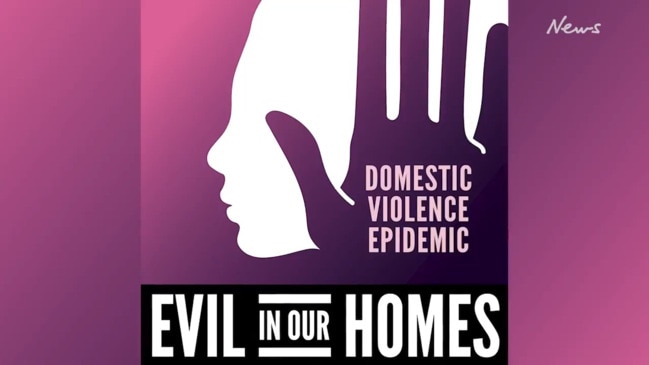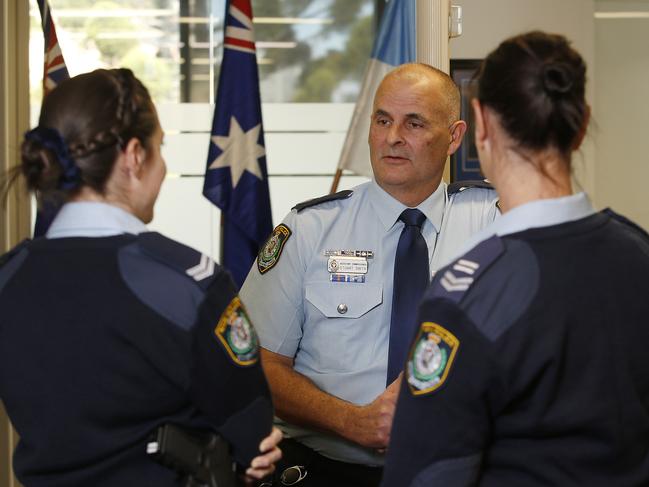Strangulation should carry same criminal status as use of guns and knives: experts
Bare hands are among the deadliest weapons in the arsenal of domestic violence abusers — and they should carry the same status as guns and knives, DV experts say.

Police & Courts
Don't miss out on the headlines from Police & Courts. Followed categories will be added to My News.
EXCLUSIVE: Bare hands are among the deadliest weapons in the arsenal of domestic violence abusers — and they should carry the same status as guns and knives.
Advocates say strangulation and choking should be treated more seriously under the law because it was a “serious red flag” for domestic violence deaths.
They say police should be given greater powers to pursue domestic violence perpetrators to stop the cycle of violence from escalating from choking to murder.
Tara Hunter, the acting CEO of Full Stop Australia, said that, to protect victims at risk of murder, we need to recognise the seriousness of strangulation and acknowledge the amount of cases that go unreported.
“Hands are absolutely used as a weapon and strangulation is a major risk factor for future homicide,” Ms Hunter said.

While police in NSW now treat strangulation as a stand-alone offence, any efforts to strengthen legislation to give police more power to look at the offence in the context of other controlling behaviours will be welcomed.
“We don’t want to wait until someone commits murder,” she said.
“So legislative change – to better address strangulation as an escalation of control by an offender before they commit murder – is worth looking at.”
NSW Police have disruption powers when it comes to organised crime and child protection but, with domestic violence, the options are more limited.
Experts agree that we need more than apprehended violence orders when it comes to the most dangerous perpetrators, prompting NSW Police to look at other ways to stop them.
Shocking figures have revealed there were nearly half as many AVO breaches resulting in arrests (21,342) as there were AVOs taken out (47,869) last year.
A review of the Australian legislative response to strangulation found the violent act is now established as a “predictive risk factor for future severe domestic violence and for homicide”.
“Strangulation is a very strong predictor of domestic violence-related homicide. The prevalence and high risk associated with it in the context of domestic violence underlines the need to consider how legal responses should best be framed,” the report stated.
The report, which appeared in the Sydney Law Review back in January 2014, described strangulation as a “significant concern for at least two reasons”.
First, it frequently affects the long-term health of the victim and, secondly, victims who have survived a strangulation incident often report a range of clinical symptoms including neurological and psychiatric symptoms such as loss of consciousness, paralysis, loss of sensation, vision changes, memory loss, anxiety and post-traumatic stress.
“Quite often strangulation doesn’t leave any physical injury, no marks, so victims don’t think to mention it,” Ms Hunter said.
“Also, there is the ongoing issue of victims not being believed if there are no marks.
“What we do know is they can lose consciousness or suffer serious brain injury from non-fatal strangulation.
“There is a lot of association with non-fatal strangulation and acquired brain injury. What we see is women who acquire a brain injury then their capacity to give statements and access systems can be diminished.
“At first it can appear to be a very minor injury but, in the scheme of escalating behaviour, it is a major warning sign.”
Ms Hunter said the level of strangulations going unreported was a major concern.
“We need our service systems to be well educated, so if someone comes forward, they know the right questions to ask and the signs for what they are looking for so this can be used as evidence when reporting to police.
“People themselves experiencing it sometimes find it hard to recognise that’s what it is.”
When asked directly: “Did they choke you?” some victims night answer: “No” but further questions can reveal they have experienced pressure around the throat or neck in a whole range of different ways.
“It’s one of many ways a perpetrator can abuse a victim and certainly one that is a warning sign for murder.”
Domestic violence expert and Domestic Violence NSW senior justice policy officer Dr Bridget Mottram said AVOs were just one tool in the arsenal against offenders.
“They can be less effective on high risk offenders with long criminal histories. These people are not so deterred by an AVO when the consequences don’t particularly faze them,” she said.
“That’s where the other tools in the arsenal need to come in.”
NSW Police Assistant Commissioner Stuart Smith agreed the act of strangulation was a big warning sign that a victim was in serious danger.
“It’s when that little voice in our head that says: ‘You are going too far’ is no longer present,” he said.
“That hatred, vengeance, now takes over and killing the victim is no longer hindered by whether the person should not carry the act out.”
Assistant Commissioner Smith said strangulation was an example of escalating offender behaviour that the community needed to recognise.
For more information about nonlethal strangulation go to insightexchange.net/strangulation
STRANGLED, THEN HER BODY WAS HIDDEN
After Zoran Pandilovski choked to death Elaine Pandilovski in their home, he moved her body to the basement and hid it under the stairs.
The 48-year-old used her mobile phone to take two photographs of her before fleeing and crashing his car.

When 44-year-old Ms Pandilovski failed to show up for work at school, friends and family searched the home, fearing the worst.
Zoran Pandilovski pleaded guilty to her murder in the weeks before the trial was set to commence.
He will be sentenced on August 11 this year.
STRANGLED BY A VIOLENT LOVER
This woman was strangled to death in a “violent act of uncontrollable passion”.
Chulsoo Jung, 56, killed his mistress Min Sook Moon on March 8 last year, strangling her with a phone charging cable as she sat in the front seat of his van in Sydney.
Jung hid in the back seat when Ms Moon entered the vehicle to discuss their relationship – and then he killed her in an impulsive rage.

He faced the NSW Supreme Court last year, where Justice Ian Harrison sentenced him to 18 years jail, with a non-parole period of 13 years and six months.
“Mr Jung must be punished for his crime, he took the life of a woman who was both unsuspecting and undeserving of his brutality,” the judge said.
HIGH RISK DV OFFENDERS ‘WORSE THAN BIKIES’
They are more violent than bikies, more cunning than child sex offenders, more fixated than terrorists.
They are the most dangerous of criminals facing NSW Police, according to profiling experts.
Meet the worst of the worst: high-risk domestic violence offenders.
“A violent DFV offender (Domestic and Family Violence offender) has the presence of all three behaviours rolled into one offender,” NSW Police Assistant Commissioner Stuart Smith told the Saturday Telegraph.
“We don’t see it in the others.

“They exhibit cruel and brutal behaviour over a partner over a sustained period.
“Bikie’s for example might exhibit that behaviour just once.
“DFV offenders partake in sustained campaigns of escalating behaviour.
“They are our most dangerous threat.”
Assistant Commissioner Smith said this category of high risk offender embarks on a relentless campaign.
They use whatever means they have to control someone, including threats, intimidation and stalking.
Tara Hunter, the acting CEO of Full Stop Australia, agreed.
Ms Hunter described the behaviour as an “absolute campaign of terror”.
As a counsellor she sees the pattern of behaviour constantly, with women from Aboriginal and Torres Strait Islands, and of culturally and linguistically diverse backgrounds, over-represented as the targets.
“An alarming trend we are seeing in the counselling setting is the perpetrators will even engage with the health care workers who have contact with their victims,” Ms Hunter said.
“For me, a big red flag is if I have someone’s partner ringing.”
She said perpetrators had “ingrained beliefs” that they demanded to be met.
For more information about nonlethal strangulation go to insightexchange.net/strangulation



